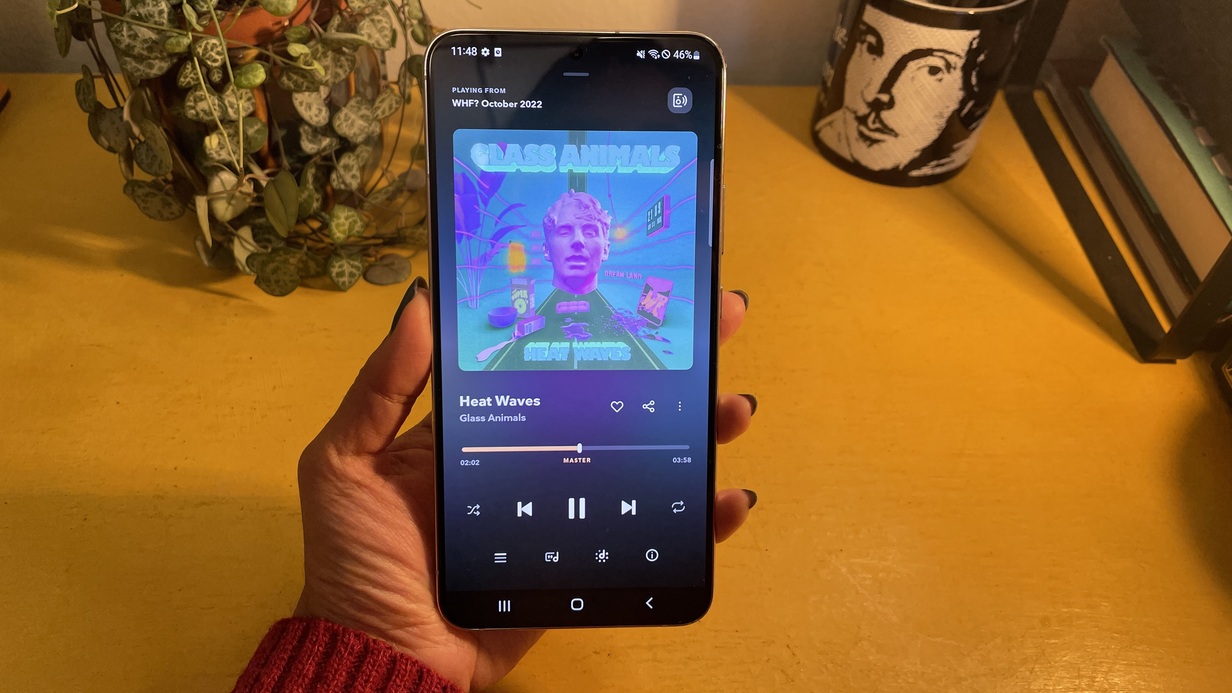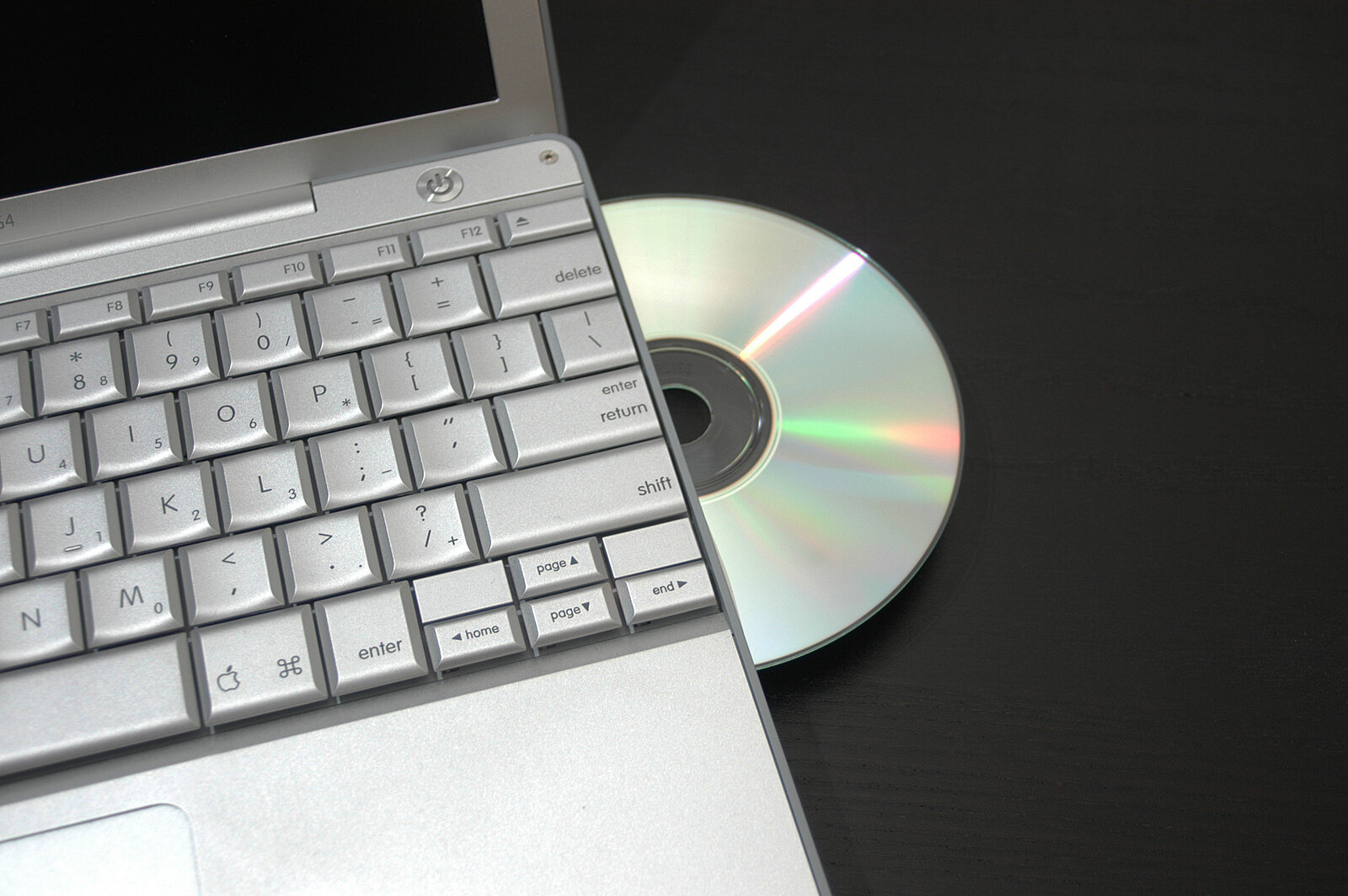Home>Production & Technology>Digital>Why Digital Music Has Poor Quality


Digital
Why Digital Music Has Poor Quality
Published: March 10, 2024
Discover why digital music often lacks quality and how to improve it. Explore the impact of digital formats on sound and ways to enhance your listening experience.
(Many of the links in this article redirect to a specific reviewed product. Your purchase of these products through affiliate links helps to generate commission for AudioLover.com, at no extra cost. Learn more)
Table of Contents
Introduction
Digital music has become an integral part of our daily lives, offering convenience and accessibility like never before. However, despite its widespread popularity, many music enthusiasts and audiophiles have raised concerns about the perceived decline in audio quality. This phenomenon has sparked a debate within the music industry and among consumers, prompting a closer examination of the factors contributing to the poor quality of digital music.
As technology continues to evolve, the way we consume and experience music has undergone a significant transformation. Gone are the days of physical media dominating the music landscape; instead, digital formats have taken center stage. While this shift has undoubtedly revolutionized the music industry, it has also brought to light the inherent limitations and challenges associated with digital audio.
In this article, we will delve into the various factors that contribute to the poor quality of digital music, shedding light on the complexities that underpin this issue. From the impact of compression and lossy formats to the influence of streaming services and bandwidth limitations, we will explore the multifaceted nature of digital music quality. Additionally, we will examine the role of mastering and mixing techniques, as well as the significance of digital-to-analog conversion in shaping the overall audio experience.
By unraveling the intricacies of digital music quality, we aim to provide a comprehensive understanding of the challenges and trade-offs inherent in the digital music landscape. Through this exploration, readers will gain valuable insights into the factors that shape their digital music experience, empowering them to make informed decisions and appreciate the nuances of audio quality in the digital age.
Compression and Lossy Formats
In the realm of digital music, compression and the prevalence of lossy formats represent a fundamental trade-off between file size and audio quality. Compression techniques are employed to reduce the size of audio files, making them more manageable for storage and transmission. However, this reduction in file size often comes at the expense of audio fidelity, giving rise to the phenomenon of lossy formats.
Lossy compression algorithms achieve smaller file sizes by discarding certain audio data deemed less essential to human perception. This selective removal of data, such as high-frequency sounds and subtle nuances, allows for significant file size reduction but can lead to a perceptible loss in audio quality. As a result, the music industry has witnessed a proliferation of lossy formats, including MP3, AAC, and OGG, which have become ubiquitous in the digital music ecosystem.
The adoption of lossy formats has undoubtedly democratized music consumption, enabling vast libraries of songs to fit into portable devices and facilitating seamless streaming experiences. However, the compromise in audio quality inherent in these formats has sparked ongoing discussions about the impact on the overall listening experience. Audiophiles and discerning listeners often lament the loss of depth, clarity, and dynamic range associated with compressed and lossy audio files, highlighting the inherent limitations of this approach.
Furthermore, the widespread dissemination of lossy formats has shaped consumer expectations and perceptions of audio quality. Many listeners have grown accustomed to the artifacts and compromises inherent in compressed music, potentially diluting their appreciation for high-fidelity audio. This normalization of compromised audio quality has implications for the broader music ecosystem, influencing production standards and the way artists and producers approach the mastering and distribution of their music.
While lossy formats have undeniably revolutionized the accessibility and portability of music, their impact on audio quality cannot be overlooked. As the digital music landscape continues to evolve, it is essential to strike a balance between efficient file compression and preserving the integrity of the musical experience. By understanding the nuances of compression and lossy formats, both industry professionals and consumers can navigate the complexities of digital music with a heightened awareness of the trade-offs at play.
Streaming Services and Bandwidth
Streaming services have revolutionized the way we consume music, offering unparalleled convenience and access to vast libraries of songs at our fingertips. However, the seamless delivery of music via streaming platforms is intricately linked to the constraints of bandwidth, which can significantly impact the quality of the audio experience.
Bandwidth, in the context of streaming music, refers to the amount of data that can be transmitted over a network within a specified period. When streaming music, the available bandwidth directly influences the rate at which audio data is transmitted from the server to the listener's device. Insufficient bandwidth can result in buffering, interruptions, and, most notably, a degradation in audio quality.
In an effort to optimize streaming performance and accommodate varying network conditions, streaming services often employ adaptive bitrate streaming. This technology dynamically adjusts the bitrate of the audio stream based on the available bandwidth, ensuring a continuous playback experience while striving to maintain an acceptable level of audio quality. While adaptive bitrate streaming mitigates some of the challenges posed by fluctuating bandwidth, it introduces complexities that can impact the fidelity of the audio being delivered.
Furthermore, the widespread adoption of lossy audio formats by streaming services further compounds the issue of audio quality. While these formats facilitate efficient streaming and storage, they inherently sacrifice audio fidelity, amplifying the impact of bandwidth limitations on the listening experience. As a result, listeners may encounter perceptible differences in audio quality, particularly when streaming music over networks with constrained bandwidth.
Moreover, the proliferation of mobile streaming, often reliant on cellular data connections, introduces additional considerations for audio quality. Mobile networks, characterized by fluctuating signal strength and varying data speeds, pose unique challenges for delivering consistent and high-fidelity audio experiences to listeners on the go.
As streaming services continue to dominate the music consumption landscape, the interplay between bandwidth, adaptive streaming technologies, and lossy audio formats remains a critical consideration for both service providers and consumers. Balancing the imperatives of efficient data transmission with the preservation of audio quality presents an ongoing challenge, underscoring the need for innovative solutions that prioritize the integrity of the listening experience in the digital realm.
Mastering and Mixing Techniques
In the realm of digital music production, mastering and mixing techniques play a pivotal role in shaping the final sonic character of a song or album. These processes are integral to ensuring that the music is presented in its most polished and cohesive form, ready for distribution and consumption across various platforms.
Mastering, the final stage in the production chain, involves refining the overall sound of the music to achieve consistency, balance, and optimal playback across different audio systems. This intricate process encompasses a range of technical and artistic considerations, including equalization, compression, stereo enhancement, and the application of specialized mastering tools. By meticulously fine-tuning the audio elements, mastering engineers strive to enhance the clarity, depth, and overall impact of the music, ensuring that it translates seamlessly to the listener's ears.
Similarly, mixing represents a critical phase in the production workflow, where individual tracks and elements of a song are blended together to create a cohesive and harmonious sonic tapestry. Mixing engineers meticulously balance the levels, panning, and tonal characteristics of each instrument and vocal track, sculpting the sonic landscape to convey the intended emotional and artistic nuances of the music. Through the adept application of effects, spatial processing, and dynamic manipulation, mixing engineers strive to achieve a compelling and immersive sonic experience that resonates with the listener.
In the context of digital music quality, mastering and mixing techniques wield a profound influence on the overall audio fidelity and perceptual quality of the music. A meticulously mastered and well-mixed track can elevate the listening experience, unveiling intricate details, spatial depth, and sonic richness that captivate the audience. Conversely, suboptimal mastering and mixing practices can compromise the integrity of the music, resulting in a lackluster and underwhelming sonic presentation.
Moreover, the proliferation of digital distribution channels and streaming platforms has underscored the significance of mastering and mixing for digital music. The unique sonic characteristics and technical requirements of these platforms necessitate a nuanced approach to mastering and mixing, ensuring that the music retains its sonic integrity and impact across diverse playback environments.
As the digital music landscape continues to evolve, mastering and mixing techniques remain pivotal in shaping the sonic identity of music, underscoring the enduring relevance of these processes in the pursuit of audio excellence in the digital realm.
The Role of Digital-to-Analog Conversion
In the realm of digital music, the process of digital-to-analog conversion holds profound significance in shaping the final auditory experience for listeners. At its core, digital-to-analog conversion represents the pivotal transformation of digital audio data into analog signals that can be faithfully rendered as sound waves, perceptible to the human ear.
When music is recorded and produced in a digital format, it is inherently represented as a series of discrete numerical values, typically in the form of binary code. This digital representation, while efficient for storage and manipulation, must undergo conversion into analog signals to be accurately reproduced as sound through speakers or headphones. This critical conversion process is facilitated by digital-to-analog converters (DACs), which play a central role in translating the digital audio data into analog waveforms that faithfully capture the nuances and subtleties of the original musical performance.
The quality and precision of digital-to-analog conversion directly influence the fidelity and perceptual richness of the reproduced audio. High-quality DACs are characterized by their ability to faithfully reconstruct the original analog waveform from the digital source, preserving the intricate details, dynamic range, and tonal subtleties inherent in the music. Conversely, subpar DACs may introduce distortions, noise, and inaccuracies that detract from the authenticity and immersive quality of the audio playback.
Furthermore, the proliferation of digital music consumption across a myriad of devices, ranging from smartphones and laptops to dedicated audio systems, underscores the pervasive influence of digital-to-analog conversion on the listening experience. The quality of the DAC employed within these devices profoundly shapes the sonic character and fidelity of the music, underscoring the importance of investing in high-fidelity DACs to unlock the full potential of digital audio.
In the pursuit of audio excellence in the digital realm, the role of digital-to-analog conversion cannot be overstated. As technology continues to advance, the refinement and integration of high-fidelity DACs into audio playback systems and devices are paramount, ensuring that listeners can experience the full depth, clarity, and emotional resonance of their favorite music in its purest form.
The seamless and transparent conversion of digital audio into analog signals represents a cornerstone of the digital music ecosystem, underpinning the quest for uncompromising audio quality and fidelity in the digital age.
Conclusion
In conclusion, the poor quality of digital music is a multifaceted issue shaped by a confluence of technological, artistic, and perceptual considerations. The widespread adoption of compression and lossy formats has revolutionized music accessibility and portability, yet it has also introduced compromises in audio fidelity that resonate throughout the digital music ecosystem. The interplay between streaming services, bandwidth limitations, and adaptive streaming technologies has underscored the delicate balance between efficient data transmission and the preservation of high-fidelity audio experiences. Moreover, mastering and mixing techniques wield a profound influence on the sonic identity of music, highlighting the enduring relevance of these processes in the pursuit of audio excellence in the digital realm. Additionally, the pivotal role of digital-to-analog conversion in shaping the final auditory experience for listeners underscores the pervasive influence of this critical process on the fidelity and perceptual richness of reproduced audio.
As we navigate the complexities of digital music quality, it is essential to recognize the trade-offs inherent in the digital music landscape. While technological advancements have democratized music consumption and distribution, they have also necessitated a nuanced understanding of the compromises and challenges that underpin the digital music experience. By fostering a heightened awareness of the factors influencing digital music quality, both industry professionals and consumers can make informed decisions that prioritize the integrity and richness of the audio experience.
Looking ahead, the pursuit of audio excellence in the digital age demands a concerted effort to reconcile the imperatives of efficiency and accessibility with the preservation of high-fidelity audio experiences. This entails a commitment to advancing technological solutions that mitigate the compromises associated with compression and lossy formats, while also prioritizing the integration of high-fidelity digital-to-analog conversion across diverse playback environments. Furthermore, the ongoing refinement of mastering and mixing practices, tailored to the unique sonic characteristics of digital distribution platforms, will be pivotal in ensuring that music retains its sonic integrity and impact across varied listening contexts.
Ultimately, the quest for audio excellence in the digital realm is a dynamic and evolving endeavor, underpinned by a collective commitment to elevating the quality and richness of the digital music experience. By embracing a holistic understanding of the factors that shape digital music quality and fostering a culture of appreciation for high-fidelity audio, we can collectively elevate the digital music landscape, empowering listeners to immerse themselves in the captivating depth and emotional resonance of their favorite music.











